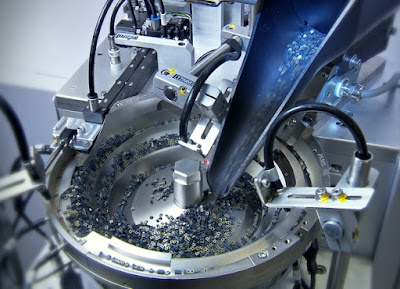Sensors are rapidly being integrated in healthcare and hazardous environment applications
The decreasing cost of electronic devices and growing access to mobile technology and wireless networks are driving the expansion of the digital economy. Integrating bio-sensors into this mix could bring great benefits for medical care and for increasing safety in hazardous environments. IEC standardization work will have an important role to play in these developments.
The sensor environment
There has been a wide debate in many publications, including e-tech and elsewhere, about the potential importance of the Internet of Things (IoT) – the global network of interconnected embedded objects or devices able to communicate and to generate and share data with one another – and the need for the provision of data to it by sensor arrays. The issue is also covered extensively in the IEC White Paper “Internet of Things: Wireless Sensor Networks”. Sensors are a key element of the interconnected world where the IoT is concerned. As well as the provision of information by individual sensor groups, they contribute inputs to the analytic s that will shape the future smart world. But sensors can also contribute to future living outside the IoT sphere, interacting in a closed system with other electronic devices.
For example, the proliferation of consumer electronics devices such as smartphones is already changing modern living. Their embedded camera and Near Field Communication (NFC) subsystems can be used to link to external sensor systems that are otherwise unconnected to the outside world. This can extend to sensors that have no intrinsic electro-technical functionality, such as color change chemical labels that can be interrogated by the smartphone camera. Utilizing algorithms running on the device, the resulting information is shown to the user on the electronic display.
Some good examples of sensor groups spanning this environment exist within medical and hazardous area monitoring. Applications span clinical, sports and occupational health and safety sectors.
Sensors for personal care
Sensors in medical devices are not a new concept – they have been a vital part of care within the hospital environment for years. However, until recently they have not been a viable option for personal monitoring outside these highly centralized care settings. Societal trends such as ageing populations have resulted in a need for personal monitoring with sensor systems outside these traditional in-patient care settings. This new generation of sensors could be an enabling technology for a more patient-centric, decentralized health care system.
International Standards are a key element of this and IEC Technical Committee (TC) 62: Electrical equipment in medical practice, will be pivotal to this work. But as we move into an environment of “Sensors everywhere”, other IEC TCs will be called upon to make a contribution. For example, the work of TC 21: Secondary cells and batteries, is important for power, as is that of TC 119: Printed electronics, for production technologies. Wireless communication standards work supports systems placed on (or in) the patient whilst enabling patient mobility and ensures the security of their highly personal data. The fabrication technologies from TC 21 and TC 119 bring the technology into ever cheaper and smaller domains, facilitating systems ranging from disposable adhesive patches to reusable on-body devices. And in this mix we may soon see smart medical dressings making possible the real-time monitoring of wounds for infection and the rate of healing. Such health informatics, the province of ISO TC 215, will in turn drive the delivery of healthcare services to remote locations, in what is called the tele-medicine market. The American Tele-medicine Association projects that this market, estimated at USD 14,4 billion in 2015, will reach USD 34 billion by 2020, growing at a compound annual growth rate (CAGR) of 18,6% from 2015 to 2020.
One interesting extension lies in the integration of a number of different sensors together to produce a “bigger picture”. Wearable Smart Devices (currently the subject of an IEC Strategy Group, SG 10) provide an interesting example of this in the form of gait and fall prediction devices. These could be wearable sensors, mounted within the insole of a shoe, monitoring foot pressure distribution and acceleration in a number of planes with a wireless connection. One possible combination is printed pressure sensors and MEMS based accelerometers, bringing together the work of TC 119 and IEC SC 47F: Micro-electro-mechanical systems. These systems integration tasks, discussed in the January/February edition of e-tech, will be covered by the liaison activities between these Technical Committees.
The issue of gait and fall prediction takes us out of the purely medical application areas and into sectors such as ageing populations. However, it also takes us further into diagnosis and therapy regimes, particularly in the area of sports medicine. Athletes’ clothing with integrated sensors and skin adhesive patches are all positive vehicles for these sensor arrays, taking the technology further into other application areas outside personal care, particularly into the area of personal safety.
Sensors for personal safety
Sensors continue to be a key element of many personal safety systems. An excellent example is provided by the tiny MEMS accelerometers used in vehicle airbags (see article in e-tech January/February 2014). However, sensor systems look likely to become much more widespread in the personal safety sector and in hazardous environments. These include:
Monitoring personnel safety in high stress environments. Human performance and wellness monitors are being developed for the military, pilots and emergency service personnel using wearable technologies. They will require bio-sensor technologies looking at early warning signs of stress, fatigue or injury.
Respiratory protective devices. International Standards for these devices are developed by ISO/TC 94/SC 15. However, as many of these devices now come equipped with electrical subsystems, such as powered fans, the incorporation of electro-technical sensors in them is logical.
Where is graphene?
No discussion of sensors would be complete without consideration of the potential of 2-dimensional materials such as graphene, coordinated within Work Group (WG) 8: Graphene related materials/Carbon nanotube materials, of IEC TC 113: Nanotechnology standardization for electrical and electronic products and systems. The use of graphene in sensors has been the subject of much research and this material is considered as ideal for sensor elements due to its attractive thermal and electrical conductivity, its electrical properties and a large surface to volume ratio. For example, graphene can be very thin whilst remaining flexible, conductive and transparent.
Thin layers result in high surface to volume ratios and the potential to produce sensor elements for a wide range of bio-medical applications. This type of sensor could also find applications outside bio-medicine, notably as industrial pressure sensors for areas such as aerospace.
Sensors to play key role in many IEC TCs' future work
The IEC recognizes that sensors will have a key role to play in the work of many of its TCs into the future. The IoT will be an obvious driver in this but the additional fields of biosensors in personal medical care and sensors for safety in hazardous environments will take the devices into some wider areas. The digital economy, as well as societal trends such as ageing populations and the need to keep healthcare costs under control, will continue to underpin these trends well into the future.
Support of Agency



Comments